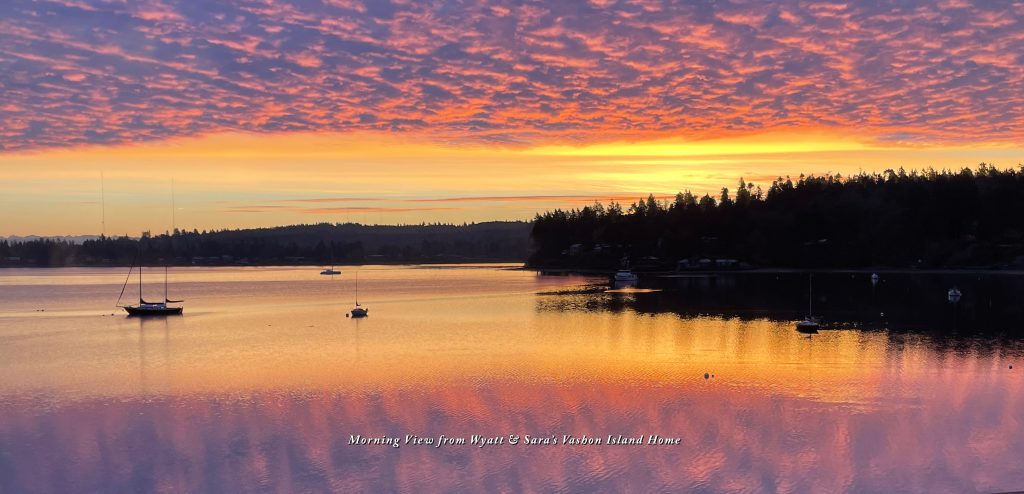Fortunately, neither of us suffered any jet lag despite the 6-hour time difference. After a good night’s sleep we were eager to see more of Milan and learn more about its storied history.
We had learned on our initial tour that Milan had been a walled city and had numerous conquerors, including Napolean Bonaparte, who was referenced often as we toured the streets surrounding the Duomo. What was news to us was that to compete with cities that had the commercial advantage of having seaports, landlocked Milan dug canals to connect it to established watercourses, allowing for the vital shipping that would give it the ability to flourish as a trading center. Today it is the location of Italy’s Stock Exchange and is an economic powerhouse known for its design, fashion and media industries. It will be the site of the 2026 Winter Olympics along with Cortina, a city in the Dolomite Mountains, 5 hours away.
Our second day in Milan started with the standard Italian breakfast of a croissant and coffee in a quaint streetside nook called Caffè Napoli, which did a bustling business with all ages of people going to work and to school. The diners were gregarious and friendly and no one ate from styrofoam or plastic containers. It was a refreshing change.
Flush with our success with the metro the previous day, we ventured back underground for a ride back to the Duomo and our first excursion of the day, a rooftop exploration of Milano’s Duomo. Neither of us has much familiarity with churches, but we are fascinated with the labor and craftsmanship that went into the construction of church properties. Previously, we had fantastic tours of St. Patrick’s in New York and Notre Dame in Paris, but we were never faced with the sheer numbers of churches that we were to see in Italy:. Each was a treat, and the Duomo was no exception.
It took nearly 6 centuries to complete construction of the Duomo. It has the familiar cruciform (a long nave crossed by a transept to form a cross) of most Western European cathedrals. It is replete with architectural and artistic works of art. We toured the cavernous interior before we took the elevator to the roof, and every aspect of the construction is jaw-dropping, from the locally-mined marble that make up the floors and the 78-foot columns to the endless panels of stained glass depicting stories from the bible. It became obvious to us that the cathedrals were more than a place of worship, but also a form of communication, retelling Church gospel to parishioners who could neither read nor write.
As fascinating as this was, our expectations for the rooftop tour were beyond biblical. As the photos (below) indicate, those expectations were exceeded by the sheer numbers of exposed statues, gargoyles, flying buttresses and ornamentation we saw atop the Duomo. We also had some killer views and got a much better grasp of the city seeing it from one of its highest structures.
Our tour tickets included free entrance to the Duomo Museum, so we walked across the piazza to the museum and learned even more about this amazing cathedral. We left fully immersed in all things Duomo, ready for our next stop, Castello Sforzesco (also known as Castle Sforza). Getting there required an interesting walk across town, after we secured a sandwich at a coffee bar near the Duomo.
MILANO PHOTO GALLERY
Click on any image to expand and begin slideshow
Like Milan, Castle Sforza has a many-layered history, depending on which family or nation was in power at the time. It was built in the 15th century by Francesco Sforza, Duke of Milan, on the remnants of a 14th-century fortification. It has been transformed numerous times since, and today houses numerous museums and exhibits. Needless to say, it is an impressive structure, but after much walking and sign-reading, the museums there were less intriguing than the Duomo. We did see Michaelangelo’s final Pieta statue and some extremely large tapestries, however.
There are acres of manicured park right behind the Castle, and we took some time to relax in the shade and eat some gelato before we took another metro, this time with a transfer, and headed back to our apartment. It was a full day, so we found a nice restaurant a block from where we were staying and had a nice white-tablecloth dinner there before retiring.
The next morning we repeated breakfast at Caffè Napoli and returned to Milano Centrale to catch our train to Verona.
WHAT WE DID NOT SEE
We could have spent a week in Milan but chose to move on instead. We did not see any of Leonardo’s artwork (most notably, The Last Supper mosaic), nor did we visit the Naviglia, the remaining canal area of town that was supposed to have exciting nightlife. There was also a host of other museums that could have occupied our time, but we opted to save those for a return visit.












































































